Folk Beliefs About the Irish Sea: Navigating Myths and Maritime Legends
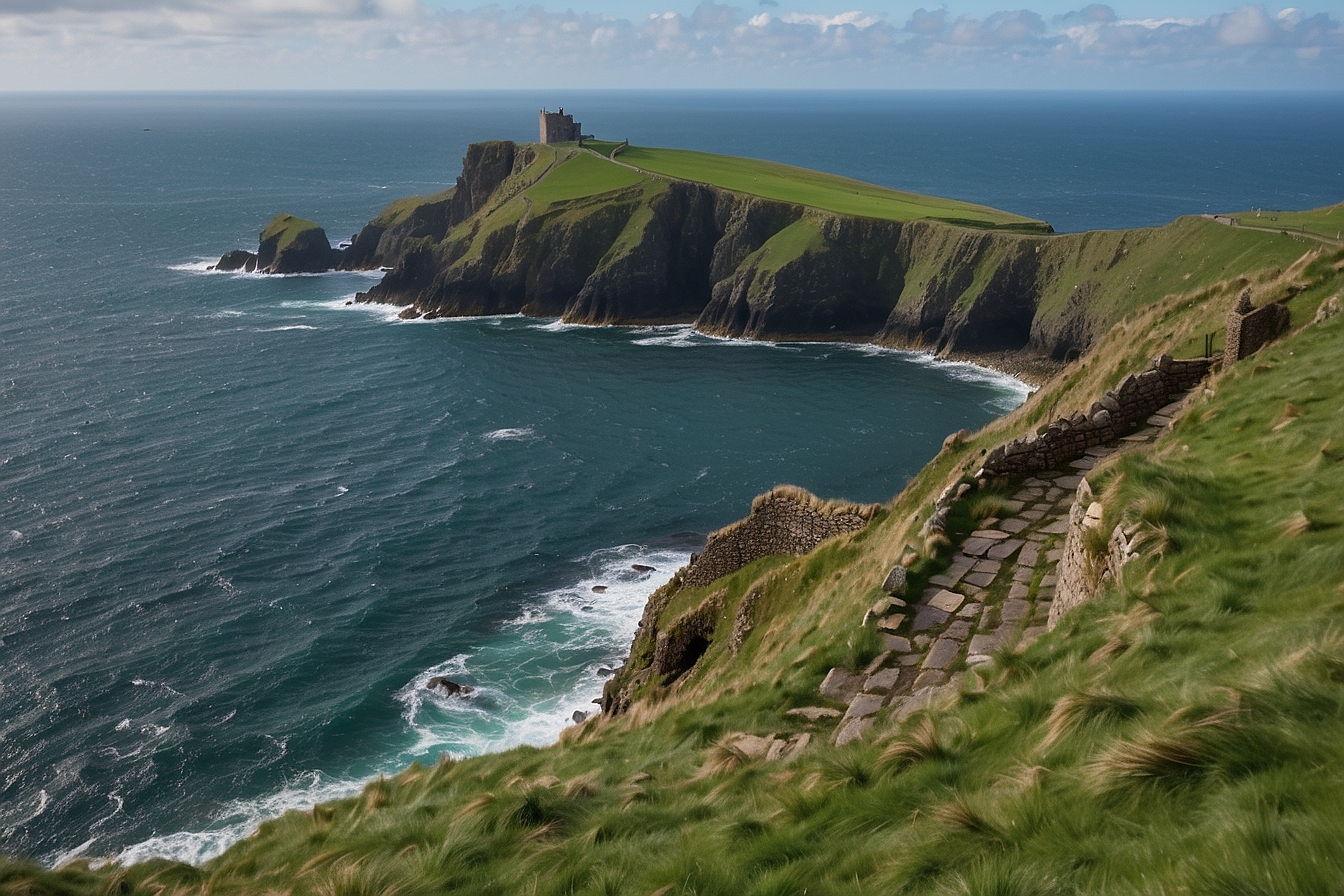
Updated On: April 22, 2024 by Shaimaa Olwan
The Irish Sea, a body of water separating Ireland from Great Britain, has long been an enigmatic presence in the cultural psyche and maritime traditions of the surrounding lands. Essentially a connector as well as a divider, its tides have shaped countless aspects of Irish life, from economic prosperity to the nurturing of a rich seam of folklore. Whether it’s the bracing winds that sweep across the coastal communities or the gentle lap of waves against the shingle, the sea whispers tales of a mystic past, interweaving history with mythology.
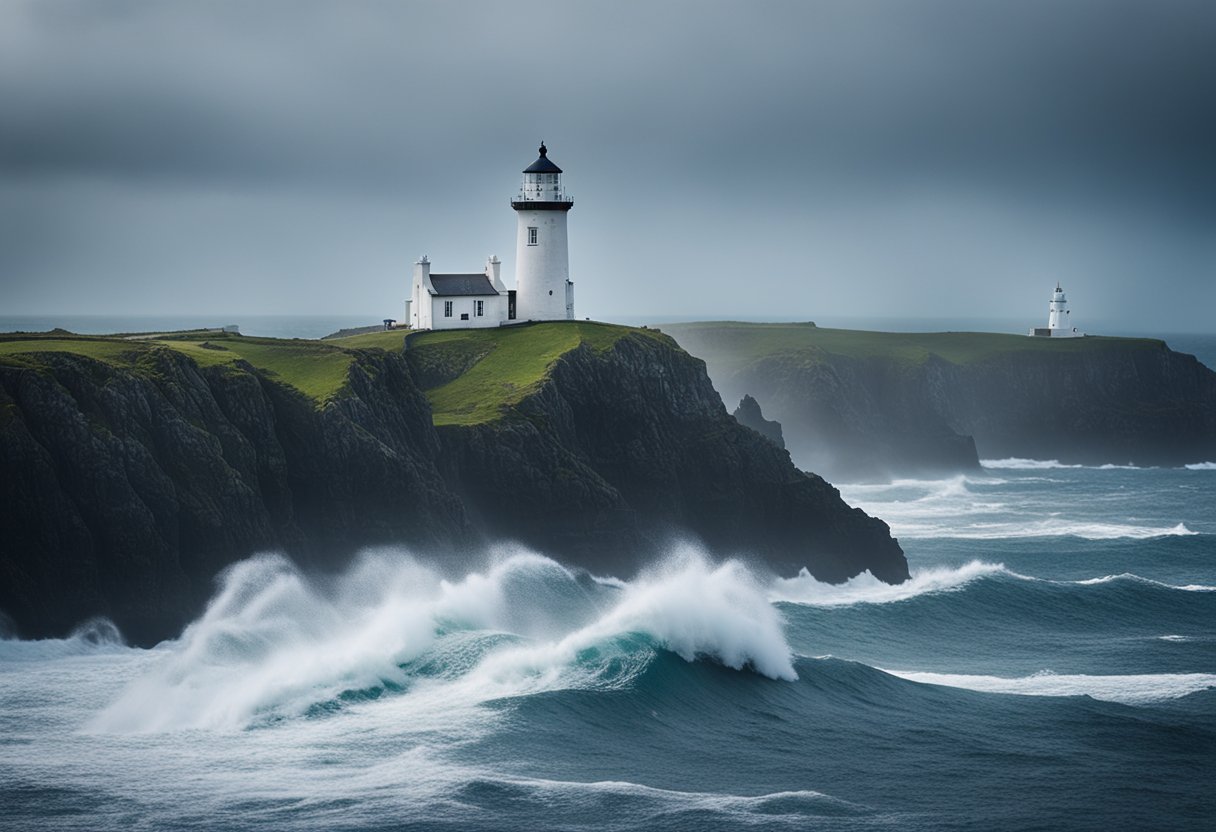
At the heart of this storied waterscape lie the folk beliefs and superstitions that have endured through generations, playing a significant role in the everyday lives of those who ply their trade upon its surface or live within sight of its shores. These beliefs range widely, from cautionary tales told to the echoes of mermaids singing beneath the surface, creating a unique cultural fabric that encompasses a deep respect for the sea’s power and mystery. The maritime life and economy of these regions have always been inextricably linked with these traditions, shaping a communal identity where the past ripples through to the present.
Table of Contents
Geographical Significance
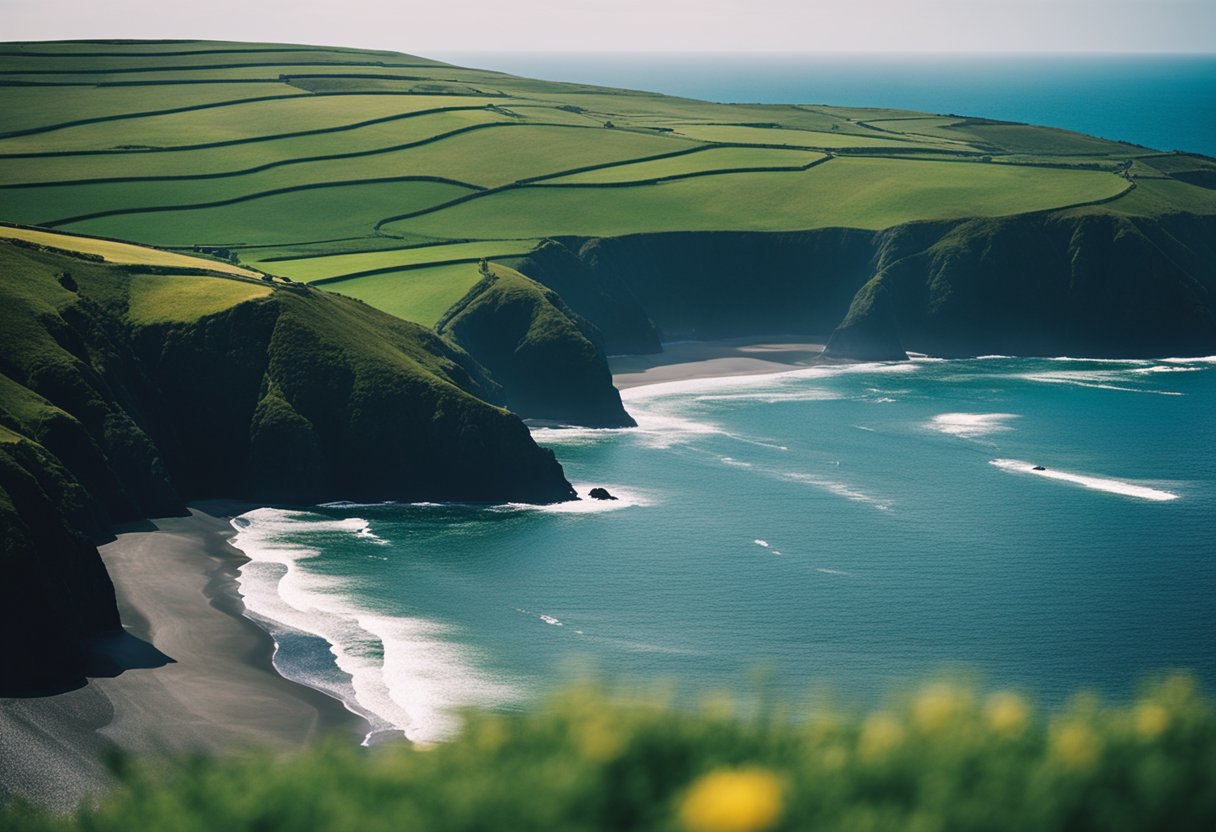
In this section, we’re going to explore how the position and features of the Irish Sea have played a crucial role in the folk beliefs surrounding it. Let’s look at the islands and coastlines, delve into the topography of the sea itself, and consider the influence of freshwater from rivers.
Islands and Coastlines
The Irish Sea is flanked by islands and coastlines rich in cultural heritage. To the west, Ireland boasts bustling ports like Dublin, while the eastern shores are home to key British locations, including Liverpool and the Welsh port of Holyhead. Each island, such as the Isle of Man and Anglesey, brings its own beliefs steeped in local tradition, shaping the folklore that echoes across these waters.
Topography of the Irish Sea
The topography of the Irish Sea, with its varying depths and unique underwater landscapes, has fueled legends for centuries. It’s more than a simple stretch of water; it acts as a geological barrier between Britain and Ireland, harbouring a multitude of maritime myths. The seabed, with its hills and valleys, influences both marine life and the human stories that aim to explain the mysteries beneath the waves.
Rivers and Freshwater Influence
The Irish Sea receives the outflows from numerous rivers, including those from Manchester and beyond, leading into the North Atlantic. Notably, the way these rivers mix with seawater has generated numerous superstitions. The mixing of freshwater influences with saltwater could be seen as a metaphor in folklore for the confluence of the otherworldly with the mundane.
History and Mythology
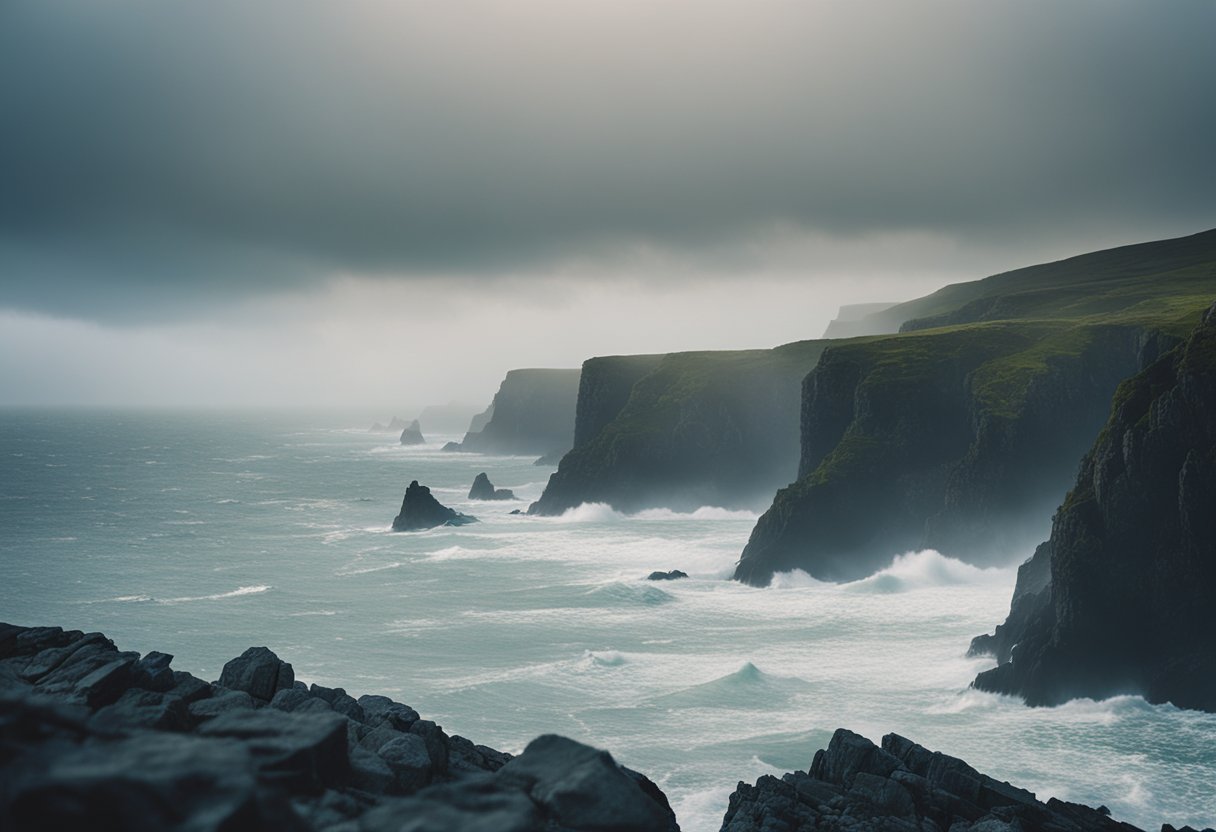
The seas around Ireland are not just waters; they are a tapestry woven with threads of myth and history. Journey with us as we uncover the tales and sagas that have traversed these waves, influencing Irish identity and storytelling.
The Irish Sea in Irish Mythology
In the lore of Ireland, the Irish Sea holds a place of mystique. According to Irish folklore, it served as a passageway for the Tuatha Dé Danann, the god-like ancestors of the Irish people, as they arrived in Ireland, shrouded in a magical mist. Oral tradition also tells of the Paleogene and Neogene periods, during which the sea’s formation is intertwined with the island’s geological history.
Legendary Figures and Deities
The Irish Sea’s mythology is rich with legendary figures. Cú Chulainn, a heroic demigod of the Ulster Cycle, is said to have performed legendary feats near its waters. Other tales speak of deities such as Manannán mac Lir, the sea god from whom the Isle of Man draws its name, suggesting a cultural bridge to Scotland and the Isle of Man. Entities like fairies and banshees are also deeply rooted in the cultural fabric, their stories passed from generation to generation.
Historical Invasions and Settlements
Christianity played a pivotal role, with historical texts telling of St. Patrick being brought to Ireland across the Irish Sea. The sea was also a stage for invasions, from the ancient Gaels to the Vikings, shaping Irish culture and history. Settlements along the coast stand today as a testament to these tumultuous times, with influencing forces arriving by the water that laps Ireland’s shores.
Cultural Traditions
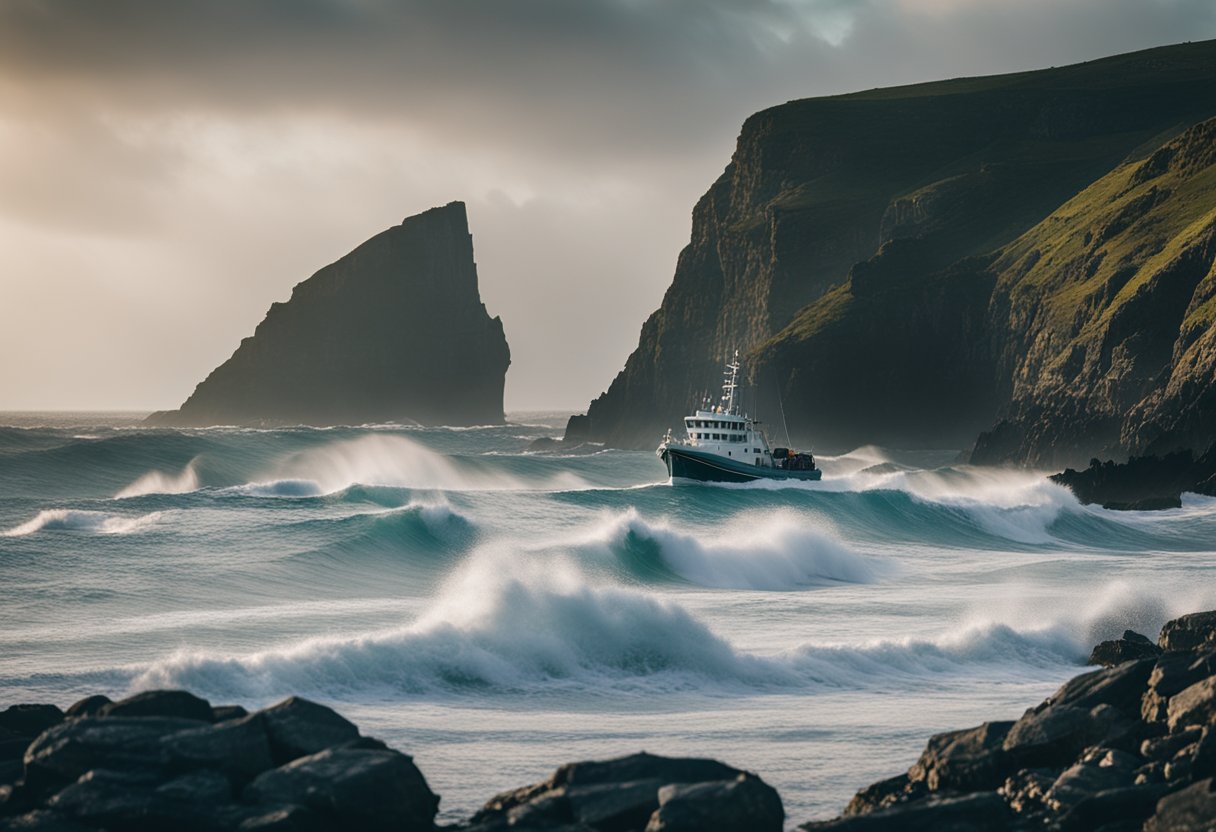
The Irish Sea has been a source of inspiration and tradition in Ireland, steeped in a rich tapestry of folklore and customs. Bridging the gap between the mundane and the magical, it has fostered a unique cultural heritage that permeates the everyday life of its coastal communities.
Folkloric Customs and Practices
Customs and Practices: Along the Irish Sea, age-old traditions reflect a deep respect for the powerful and often unpredictable nature of the water. Fishermen might still be heard to speak of manners at sea, adhering to unwritten rules shaped by generations before them. Tales of the Otherworld persist, where the sea acts as a threshold to a mystical realm, a belief once presided over by the Irish Folklore Commission.
Superstitions: Superstitions dictate much of the maritime activity, from the particular way nets are cast to the blessings uttered before a voyage. Even in today’s times, some seafarers hold to the adage that sighting certain birds or dolphins brings good fortune, while others may portend ill winds.
Irish and Scottish Gaelic Influence: The sea also influences the local dialects, including Irish and Scottish Gaelic, where nautical terms and phrases bear the mark of a long-standing seafaring heritage. Ballads and music, vital components of Gaelic culture, often recount the exploits of mythical sea creatures and legendary mariners.
Festivals and Celebrations
Festivals: The rhythm of life by the Irish Sea is marked by seasonal festivals, many with origins lost in antiquity. Love and the sea intertwine in midsummer celebrations, where bonfires on the beach symbolise the sun’s embrace of the ocean, and couples leap the flames hoping for blessings of fertility.
Weddings and Dance: Marriages in coastal towns may feature nuptial dances that mimic the ebb and flow of the tides—a metaphor for the journey ahead. The work of folklorists like Seán Ó Súilleabháin has preserved these dances, ensuring that such cherished customs continue.
In conclusion, our cultural offerings at Connolly Cove showcase the wealth of stories, superstitions, festivals, and celebrations that make the Irish Sea more than just a body of water; it is a central character in the ongoing tale of Ireland’s rich folk heritage.
Maritime Life and Economy
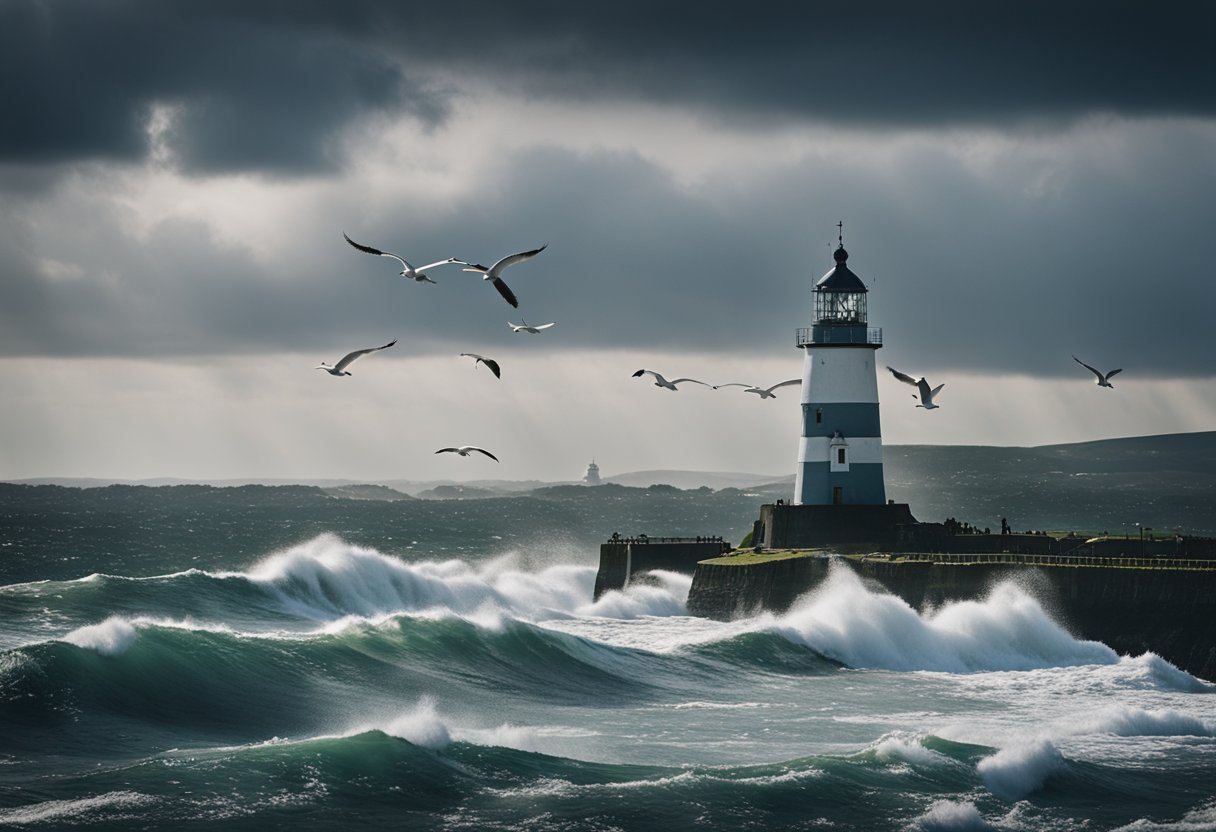
Exploring the Irish Sea reveals a robust interface where nature intertwines with the economy. Here, we delve into the roles of fishing, the diverse species that inhabit this body of water, and the trade routes that have served coastal communities for centuries.
Fishing Industries
The Irish Sea has long been a bastion for the fishing industry, with towns like Fleetwood historically reliant on the bountiful catches brought in by local fleets. Herring and cod have been significant catches, supporting livelihoods and contributing to the local and broader UK economies. Despite fluctuations and challenges, fishing remains a staple of maritime life around the Irish Sea.
- Key Species: Herring, Cod
- Key Locations: Fleetwood
- Economic Impact: High
Species of the Irish Sea
The waters of the Irish Sea are home to a myriad of marine species, a testament to the rich biodiversity inherent in this region. While herring and cod are well-known staples, other species such as plaice and sole also thrive here. Protecting these resources is essential for maintaining the balance of nature and the economy that relies on them.
- Common Species:
- Herring
- Cod
- Plaice
- Sole
Navigation and Trade
For centuries, the Irish Sea has served as a crucial navigation route, facilitating trade and cultural exchanges between Ireland and the UK. It is a lifeline for many coastal economies, with ports along the sea handling a substantial flow of goods and passengers. The movement through these waters is not merely about commerce; it’s an evolving story of human endeavour and economic progress.
- Key Aspects:
- Goods exchange
- Transport routes
- Economic development
Folk Beliefs and Superstitions
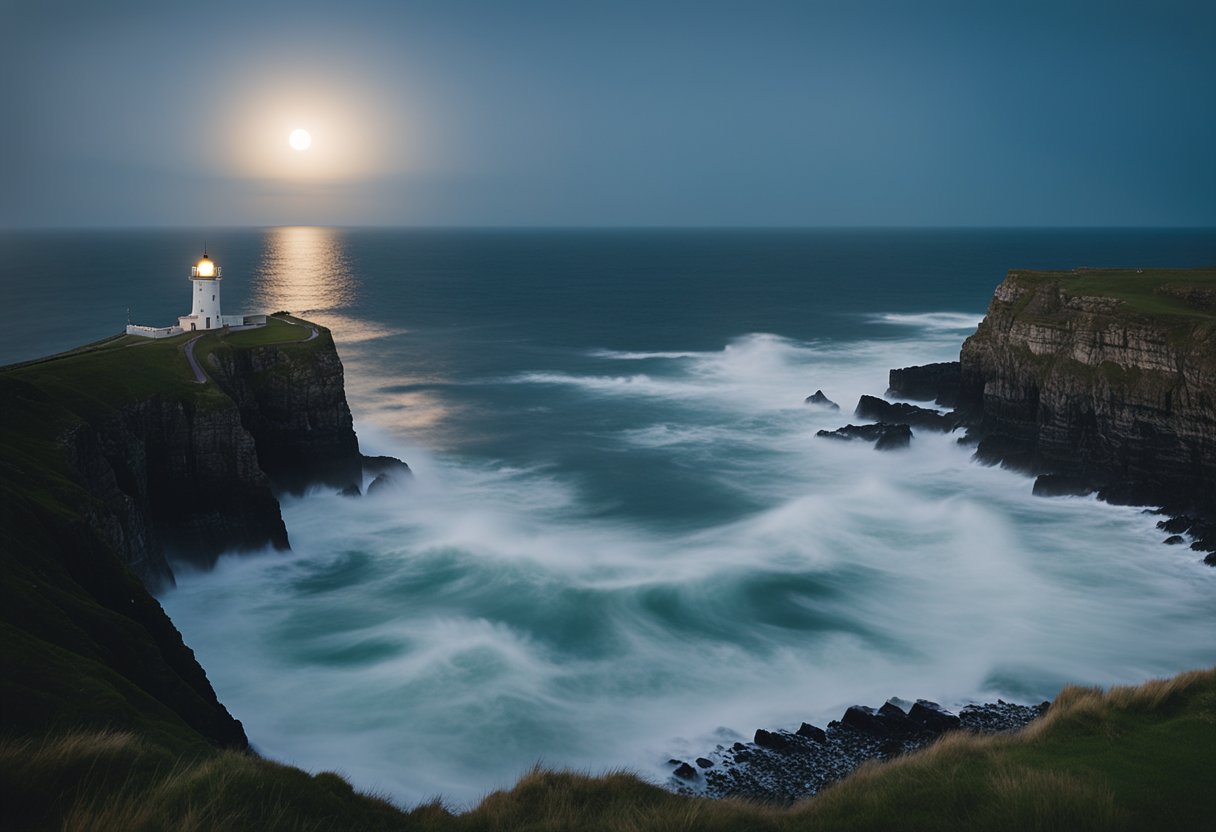
The Irish Sea harbours a rich tapestry of mythical tales and age-old superstitions that have been passed down through the generations.
Magical Beings and Legends
The waters and coastlines of the Irish Sea are closely intertwined with stories of magical beings, each one forming an integral part of our cultural heritage. For instance, leprechauns, often portrayed as mischievous solitary creatures, are said to possess hidden pots of gold. Folktales tell us that these elusive beings, while tricky to catch, can grant wishes if captured.
Similarly, selkies, seals that transform into humans, are legendary figures in Irish and Scottish folklore, particularly along the coast where people believed that selkies could come ashore, shedding their seal skins and taking human form to bewitch local inhabitants.
The belief in fairies, also known as the ‘Aos Sí’, is one of the more enchanting aspects of Irish folklore. These supernatural beings are thought to inhabit a parallel world and can bring both blessings and dangers to those who come across them.
Superstitions Affecting Daily Life
Superstitions born from folk beliefs have significantly influenced daily life around the Irish Sea. These range from rituals to avoid bad omens to practices intended to bring good luck. Children and adults alike would heed these superstitions, perpetuating them through the generations and making them a part of the living tradition.
An example is the superstition that if one disturbs the rocks where fairies are said to dwell, they will face misfortune. This belief illustrates the respect for magical beings and the oft-perceived dangers they could represent. It serves as a reminder of how deeply ingrained these tales are and how they continue to shape the attitudes and practices surrounding the Irish Sea.
Wildlife Conservation
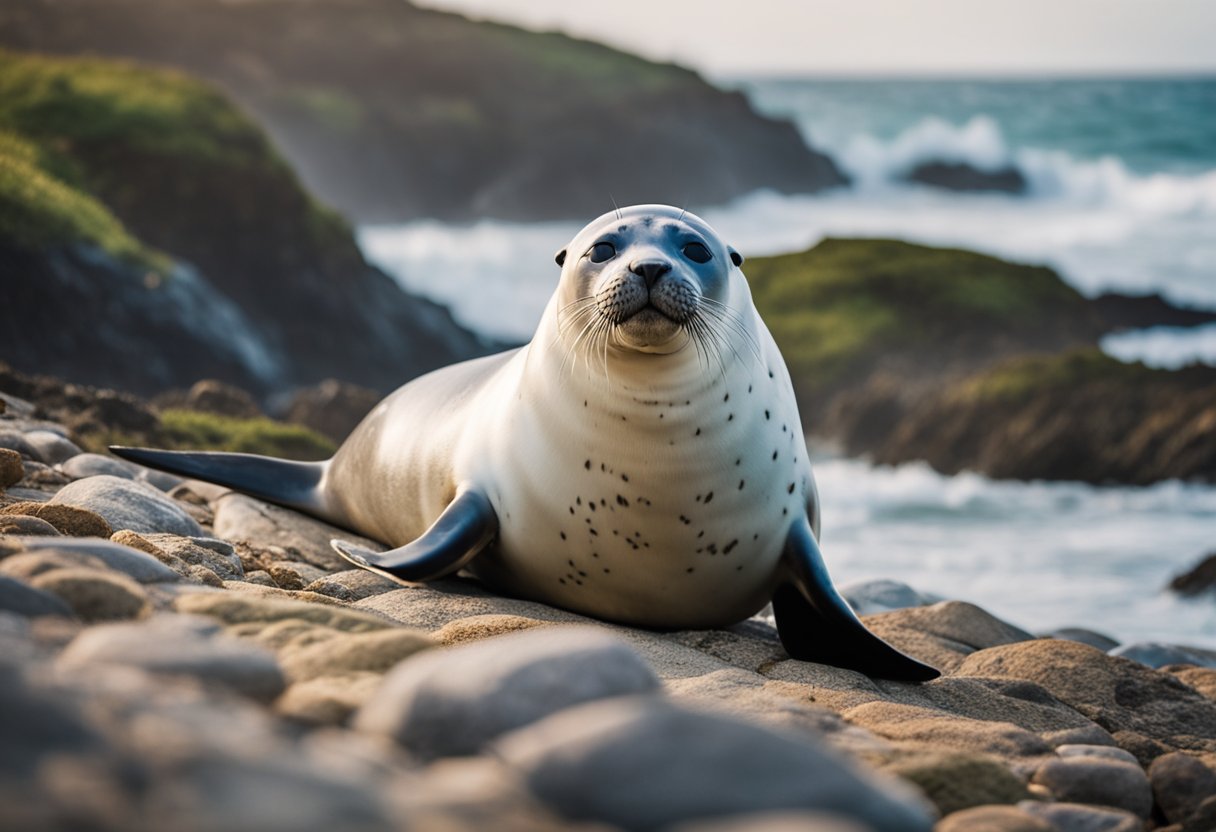
In response to the pressures facing the Irish Sea, conservationists are actively working to safeguard its unique ecosystem and minimise human impact. Our focus on preserving the natural world and fortifying nature’s resilience aims to curb the decline in marine biodiversity.
Protecting Marine Species
The Irish Sea hosts a vibrant array of marine life, from the seagrass meadows to the charismatic basking sharks. Conservation groups are urging for collaborative efforts to establish a well-managed network of Marine Protected Areas. Initiatives are aiming to ensure sustainable fisheries and the protection of key species to maintain the ecological balance necessary for a healthy sea.
- Noteworthy Collaborations: A consortium, including Ulster Wildlife, is pushing for international cooperation. With six nations bordering the Irish Sea, they are finding solutions to protect and enhance marine biodiversity.
- Sighting Initiatives: Reports of minke whales and the presence of diverse marine wildlife have been documented by various groups, such as the Cumbria Wildlife Trust, which underscores the sea’s conservation value.
Environmental Issues
The well-being of fish and other marine species in the Irish Sea is contingent upon addressing environmental challenges. Pollutants, plastic waste, and climate change are key factors affecting the sea’s health and, consequently, the survival of its native species and habitats.
- Threats: The greatest challenges include overfishing, habitat destruction, and pollution, all of which lead to disrupted ecosystems and declining wildlife populations.
- Conservation Measures: Actions taken by entities such as The Wildlife Trusts emphasise the importance of cross-border collaboration to combat these threats, promoting policies for cleaner seas and recovery of natural habitats.
Cultural Impact of the Irish Sea
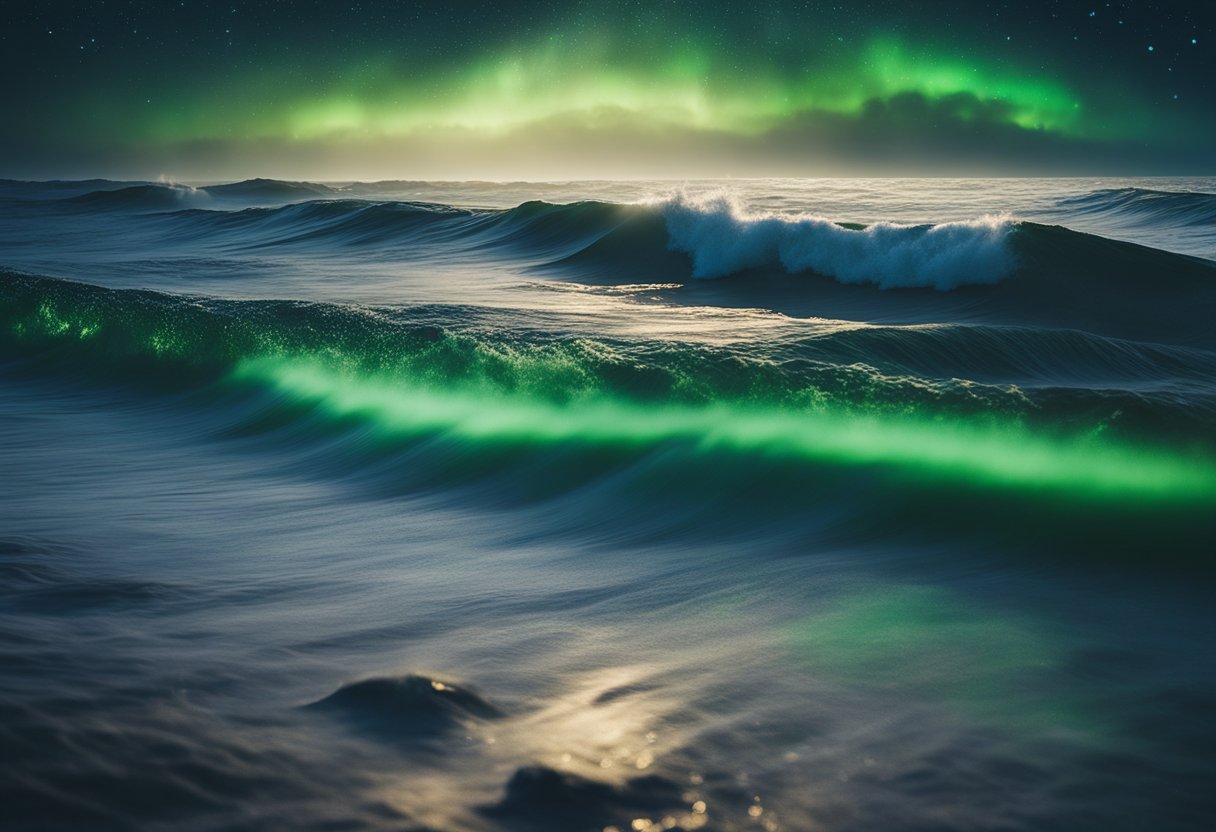
The Irish Sea has long been a muse for creative expression, reinforcing its status as an integral part of Irish culture and storytelling.
Literature and Poetry
Irish Sea in Literature: The swirling currents and echoing waves of the Irish Sea have often been captured in the evocative prose of Irish authors. These waters are not just a geographic feature but hold stories whispered through generations, bound in the pages of books. For instance, its cultural significance has been encapsulated in scholarly works examining its influence during the Medieval era, highlighting its role as a conduit for the intermingling of literature, languages, and histories.
Poetry Inspired by the Irish Sea: Poets, too, have drawn inspiration from the sea’s ever-changing nature. The Irish Sea’s temperamental waves serve as a metaphor for the ebb and flow of life, explored through the poignant verses that comprise our rich oral tradition.
Film and Visual Arts
The Irish Sea in Film: From documentaries to feature films, the visual medium has often portrayed the Irish Sea, capturing its raw beauty and its role in shaping the lives on its shores. Movies have depicted the sea as a character in its own right, influencing narratives and leaving an indelible impact on viewers.
Irish Sea Influence on Visual Arts: Artistic renderings of the Irish coast and sea reflect its vibrant cultural tapestry, with artworks often conveying the deep connection between the sea and Irish identity. Videos also harness the visual storytelling power, providing a medium through which the knowledge of the sea’s cultural importance is shared globally.
In our work, we understand that each frame of a video or line of a poem encapsulates a piece of the Irish Sea’s vast cultural essence. Our stories are steeped in its depths, our knowledge shared through its inspiration, and our culture forever influenced by its presence.
Modern Day Connections
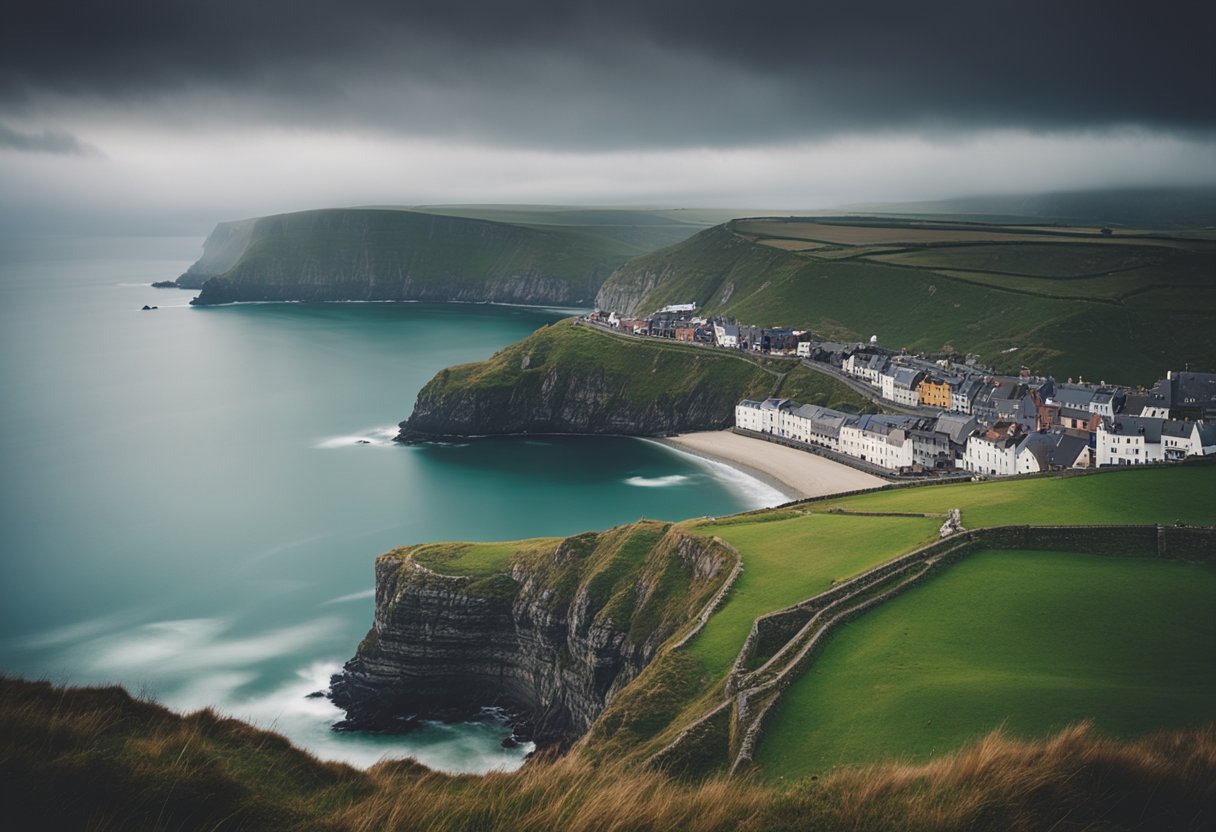
In this section, we’ll explore how the Irish Sea serves as a pivot for both transportation and economic activities that bind the west of Britain to Ireland.
Transportation Corridors
The Irish Sea is a bustling maritime highway, linking ports such as Liverpool and Holyhead in England and Wales with Dublin, the capital of the Republic of Ireland. Frequent ferry services operate across this corridor, proving essential for both passenger travel and freight. Our journey on these waters bridges cultural and economic spaces, knitting together communities that lie on either side of this expansive sea.
Economic Links between Countries
To consider the Irish Sea is also to think of the economic ties it supports. It acts as a liquid bond between Great Britain and Ireland, featuring prominently in trade relations. For instance, Holyhead serves as a crucial gateway for goods entering and leaving Ireland, connecting to transport networks that lead to London and other parts of Britain. The maritime connection thus woven is intricate and deeply ingrained in the commercial fabric of these countries.
Climate and Weather Patterns
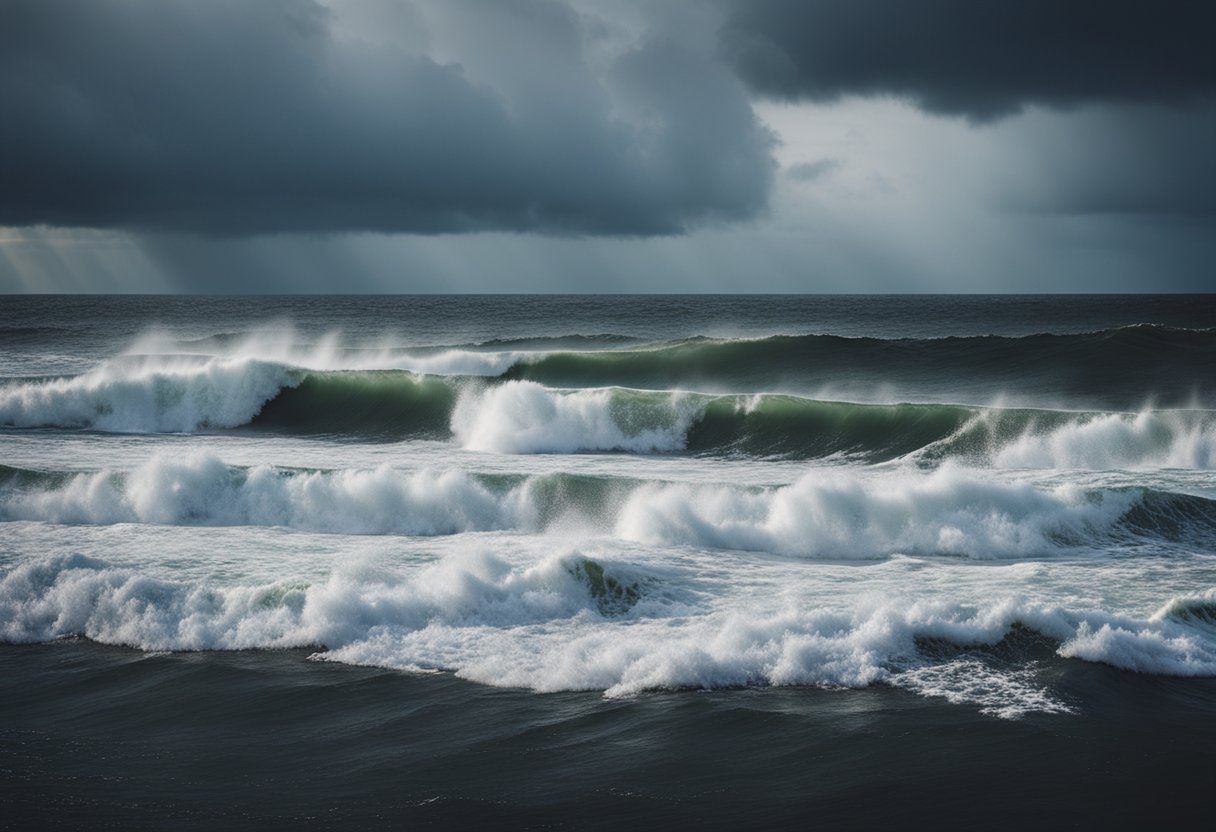
The Irish Sea plays a crucial role in shaping the climate and weather patterns of the surrounding regions. Our understanding of these influences helps us to appreciate the symbiotic relationship between the sea and the atmosphere.
The Influence of the Sea on Climate
The Irish Sea, positioned between Great Britain and Ireland, acts as a significant moderator of the climate for the adjoining landmasses. Islands in the sea experience a maritime climate characterised by mild temperatures and consistent precipitation. Due to the heat-retaining nature of water, the sea has a thermal inertia that causes nearby coastal areas to retain warmth in autumn and winter, preventing extremes in temperature variation that are more common inland.
Precipitation levels around the Irish Sea are also impacted, as prevailing winds collect moisture from the sea’s surface. This moisture is subsequently deposited on land in the form of rainfall, particularly on the western coasts that are subject to westerly winds. These effects are more pronounced in regions of higher altitude where orographic rainfall is common due to the uplift of moist air over terrain.
Overall, the Irish Sea’s influence extends beyond the mere geographical to play a key part in the climate patterns of its bordering nations.
Educational Resources
In our exploration of the Irish Sea’s folklore, we have curated a selection of educational resources that provide a deeper understanding of the narratives and cultural significance tied to this natural wonder.
Research Institutions
Irish Folklore Commission: Established to preserve and document the country’s oral traditions, the Irish Folklore Commission is a repository of invaluable knowledge related to Ireland’s cultural heritage, including the myths and legends surrounding the Irish Sea. Their collected works offer extensive material for both casual readers and serious researchers seeking to learn about traditional Irish stories and their connection to the sea.
Documentary and Media
- Documentaries and Videos: A variety of documentaries and videos shed light on the Irish Sea’s influence on local traditions and practices. From the work of individual filmmakers to broadcasts by national networks, these media provide visual and narrative accounts that inspire appreciation for the sea’s role in shaping Irish cultural identity.
- Movies and Stories: The storytelling tradition of Ireland often features the Irish Sea and is captured in many movies that depict these tales. Additionally, online platforms such as Connolly Cove not only offer insights into the Irish Sea but also share stories from diverse cultures and landscape experiences, enhancing education around the world’s natural and cultural wealth.
Frequently Asked Questions
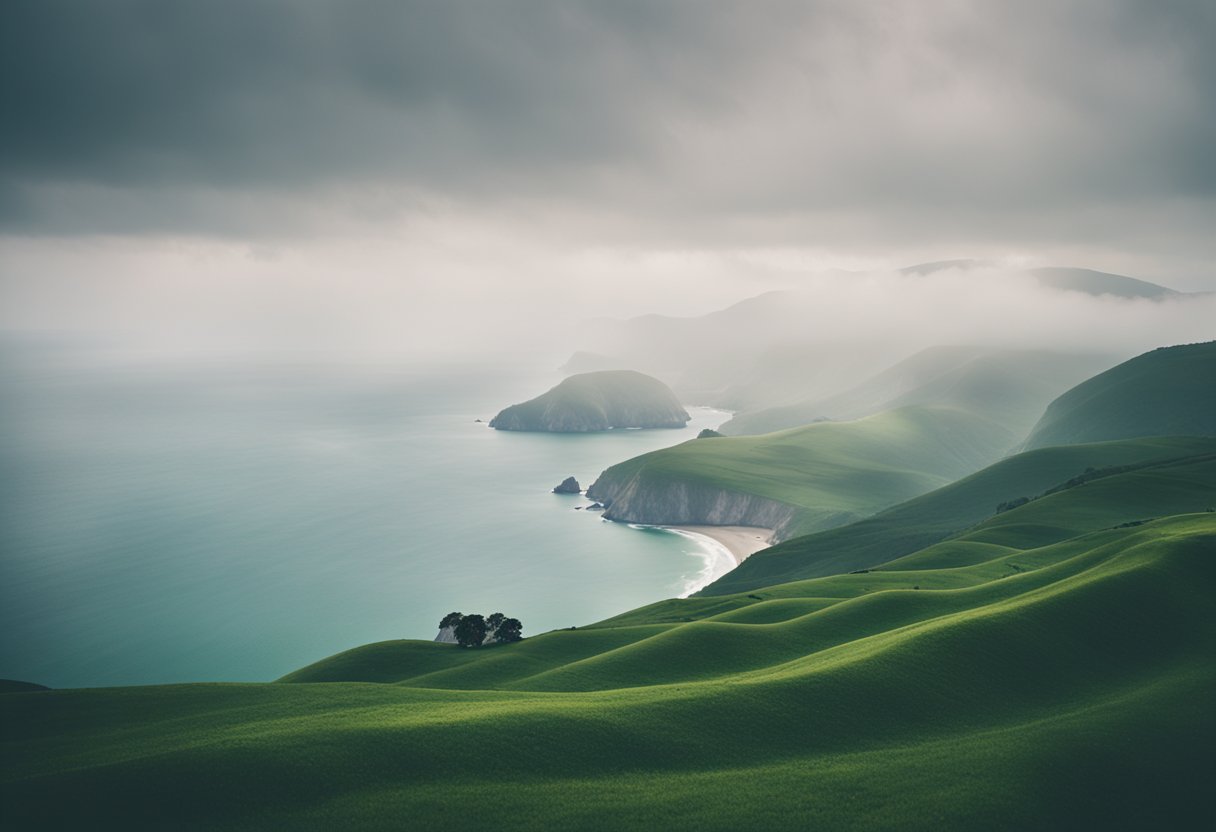
We’ve gathered some of the most commonly asked questions about the enduring folk beliefs related to the Irish Sea.
What are the common characters found in Irish sea folklore?
In Irish sea folklore, characters such as the sea god Manannán mac Lir stand out, revered as the king of the Otherworld and associated with the sea and its mysteries. We often hear tales of his protection over sailors and gift of abundant crops.
Which creatures from Irish folklore are believed to inhabit the Irish Sea?
Creatures believed to inhabit the Irish Sea include the mystical selkies or Seal Folk, who can change from seal to human form, and the fearsome each uisce, a dangerous water spirit resembling a horse.
What are some Irish sea animal tales that hold significance in folklore?
Irish sea animal tales are abundant, with the legend of the Selkies being particularly noteworthy. These myths often involve selkies transforming from seals to humans, with stories centring around their interactions with, and impacts on, human lives.
How do Irish sea tales and beliefs intertwine with overall Irish culture?
The sea tales and beliefs serve as a testament to Ireland’s deep connection with the ocean, influencing everything from literature and music to daily customs, reflecting the nation’s respect and awe for the sea’s power and mystery.
Can you describe the characteristics of a Merrow in Irish mythology?
A Merrow in Irish mythology is the equivalent of a mermaid or merman, with descriptions often attributing them with green hair, a red cap, and a gentle, alluring nature. They’re said to be capable of forming relationships with humans.
What superstitions surround the maritime traditions in Ireland?
Maritime traditions in Ireland are woven with superstitions such as the reverence for certain sea birds as omens, the belief in the ill-fated consequences of killing an Albatross, and specific rituals performed before setting sail to ensure a safe journey.






